What Is Restless Legs Syndrome?
Restless Legs Syndrome (RLS) is a neurological disorder characterized by an irresistible urge to move your legs, usually accompanied by uncomfortable sensations like tingling, aching, or a creeping feeling. These symptoms typically worsen in the evening or at night when you’re trying to relax or sleep, making it difficult to get the rest you need. The severity of RLS can vary, with some people experiencing mild discomfort while others struggle with symptoms that severely disrupt their sleep and daily life.
Common Causes of Restless Legs
Various factors can trigger RLS, and the exact cause may only sometimes be clear. Here are some common causes:
Iron Deficiency: Low iron levels in the brain can lead to RLS, making iron supplementation an effective treatment for some people.
Chronic Diseases: Conditions like diabetes, kidney disease, and peripheral neuropathy can contribute to RLS.
Medications: Certain medications, including antihistamines, antidepressants, and antipsychotics, may exacerbate RLS symptoms.
Pregnancy: RLS is common during pregnancy, especially in the third trimester, likely due to hormonal changes and iron deficiency.
Lifestyle Factors: Caffeine, alcohol, and a sedentary lifestyle can also play a role in worsening RLS symptoms.
While these are some of the more well-known causes, one often overlooked factor is venous disease.
Symptoms of RLS
The primary symptom of RLS is an overwhelming urge to move the legs, typically accompanied by:
- Unpleasant sensations in the legs, such as itching, crawling, or tingling
- Symptoms that worsen during periods of rest or inactivity
- Relief from discomfort upon movement, such as walking or stretching
- Symptoms that are more severe in the evening or at night, leading to sleep disturbances
The Impact on Daily Life
RLS can significantly affect the quality of life. The constant need to move the legs can lead to sleep deprivation, causing fatigue, irritability, and difficulty concentrating during the day. The condition can also lead to anxiety and depression due to the persistent discomfort and disruption of daily routines.
The Unrecognized Cause of Restless Legs
Venous disease, particularly venous insufficiency, is when the veins in your legs have trouble sending blood back to your heart. This can cause blood to pool in your legs, leading to increased pressure and the all-too-familiar symptoms of RLS, like restlessness, heaviness, or aching. Venous disease can cause significant discomfort and lead to more severe health issues if left untreated.
What’s surprising is that many people—and even some healthcare providers—may not immediately connect venous disease with restless legs. However, studies have shown that many RLS cases are linked to underlying venous issues. The good news? Once identified, venous disease is straightforward to diagnose and treat.
What Causes Venous Disease?
Several factors can increase the risk of developing venous disease, including:
- Age: As we age, vein walls and valves naturally weaken.
- Genetics: A family history of venous disease can increase your risk.
- Lifestyle: Prolonged standing or sitting, lack of exercise, and obesity can contribute to venous issues.
- Pregnancy: The increased blood volume and pressure on the veins during pregnancy can lead to venous problems.
- Gender: Women are more likely to develop venous disease, partly due to hormonal changes.
What are the Symptoms of Venous Disease?
The symptoms of venous disease can vary depending on the severity of the condition but often include:
- Varicose Veins: Enlarged, twisted veins that are visible under the skin.
- Pain and Discomfort: Aching, heaviness, or throbbing in the legs, especially after standing or sitting for long periods.
- Swelling: Swollen legs and ankles, particularly at the end of the day.
- Skin Changes: Discoloration, dryness, or itching around the affected veins.
- Ulcers: In severe cases, open sores may develop on the skin near the ankles.
Diagnosing Venous Insufficiency With the Right Ultrasound
Diagnosing venous insufficiency requires a specialized type of ultrasound known as a duplex ultrasound. This non-invasive test provides detailed images of veins, allowing the healthcare provider to see how blood flows and whether any blockages or valve issues contribute to the symptoms. Having this ultrasound performed by a skilled technician who understands the nuances of venous insufficiency is crucial. A proper diagnosis ensures that the underlying venous issues are accurately identified, which is the first step toward effective treatment.
How to Treat Venous Disease
Suppose venous disease is identified as the cause of restless legs. In that case, treatment can range from conservative approaches like compression stockings to minimally invasive procedures that can improve blood flow and alleviate symptoms. If restless legs are keeping you awake at night, don’t ignore the possibility that venous disease could be the cause. Contact us today to schedule a consultation and start your journey to better sleep and health.
References:
- Winkelman, J. W. (2015). Venous insufficiency and restless legs syndrome. Sleep Medicine Reviews, 22, 18-30.
- American Vein & Lymphatic Society. (2022). Restless legs syndrome and venous disease.
- Goodman, J. D., et al. (2021). Diagnosis and management of venous insufficiency. Journal of Vascular Medicine, 15(4), 233-242.


